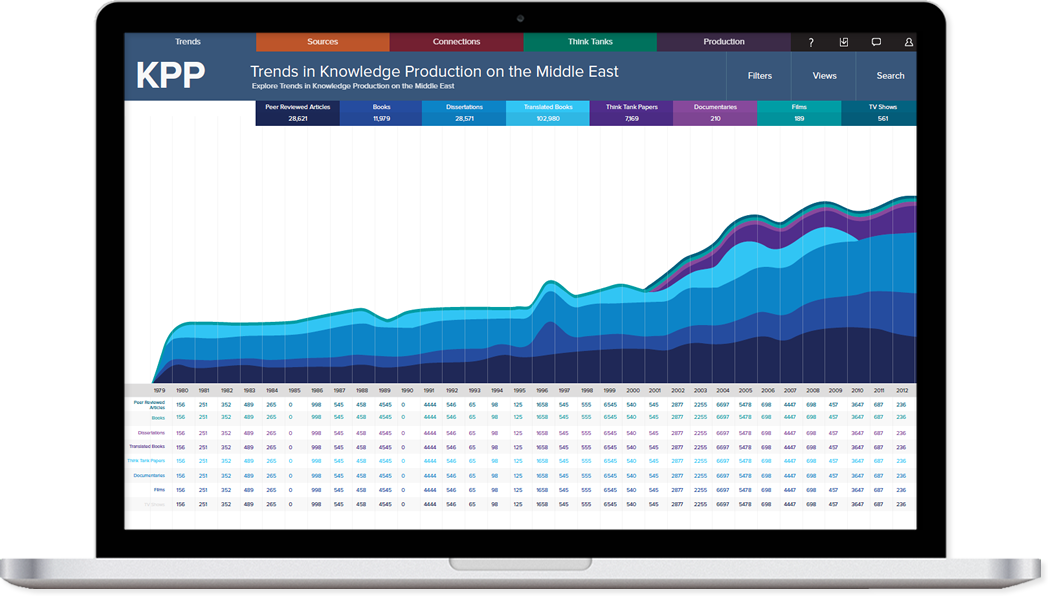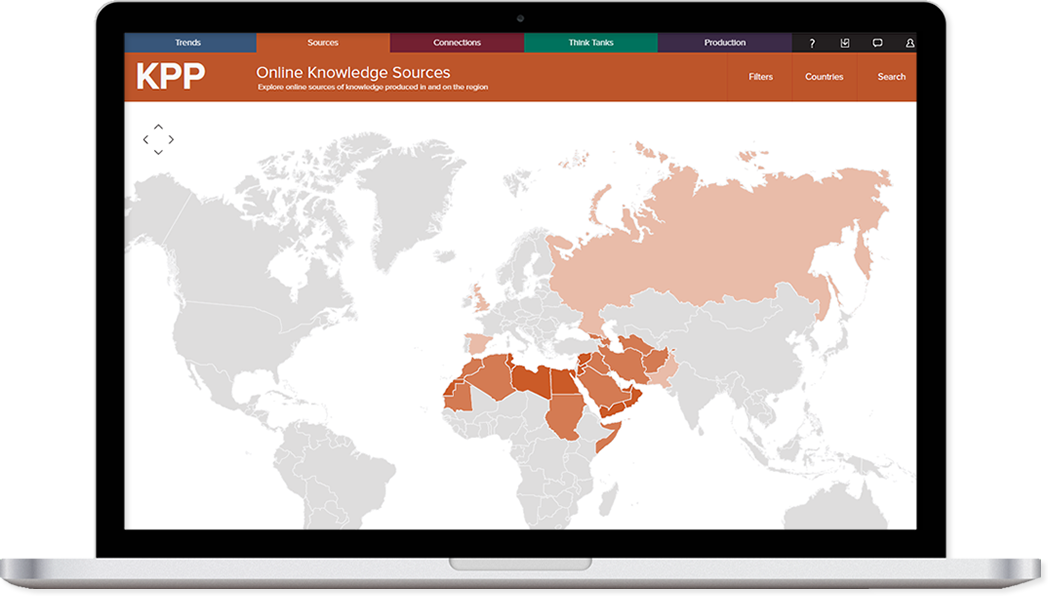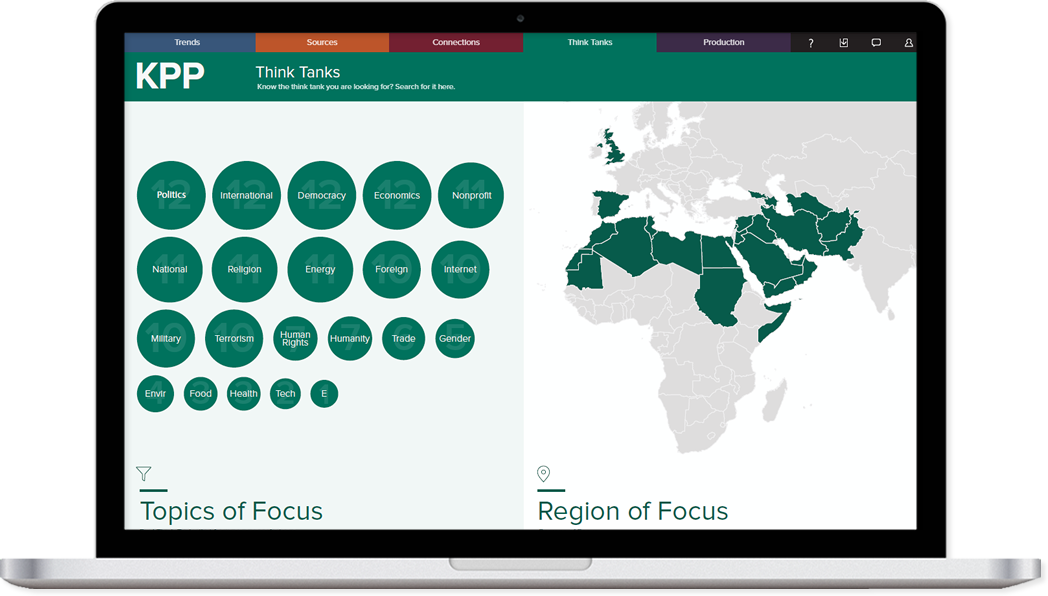Methodology
The Objective
The objective of the Knowledge Production Project’s Think Tanks Database is to portray the ways in which think tanks in the United States and Europe perceive and analyze issues related to the Middle East. This database is unique among the KPP databases in the way it seeks to represent broader and more comprehensive kinds of data regarding think tanks and the knowledge they produce. The database represents research on fifty-three think tanks, primarily based in the United States.
The Sources
Sources for the database include think tank websites, the United States government publishing office, and IRS Form 990s, the forms used for nonprofit, tax-exempt organizations. The list of fifty-three think tanks was retrieved after reviewing multiple studies on the topic of think tanks and policy.
Logistics and Formatting
The Think Tanks Database is comprised of two Google spreadsheets. The first, older spreadsheet contains financial data mined from IRS Form 990s for US-based think tanks. These financial data pertain to the years 2002-2013.
The second spreadsheet is divided into three main tabs:
Papers – Collection of publications (policy papers, briefings, and reports) with a substantive focus on a Middle East country or countries listed by think tanks on their respective websites. These papers were published between 2002-2013. As of Fall 2016, the database contains nearly 8500 papers.
Congressional Testimonies – Collection of testimonies by think tank experts, military and government officials, legal professionals, businesspeople, and others before the United States Congress pertaining to the Middle East. These testimonies were delivered between 2002-2013. The tab organizes testimonies by committee, subcommittee, and hearing. As of Fall 2016, the database contains just over one thousand testimonies.
Connections – Inventory of government employment positions held by think tank experts who focus on the Middle East, seeking to portray the movement to and from policy analysis and policy implementation posts. Unlike the other tabs, which cover 2002-2013, this tab contains data regarding individuals employed by think tanks only during 2012-2013, and includes government positions they have held from any time prior to 2013. The tab lists experts employed at think tanks in 2012-2013, the titles and positions they have held in government, the MENA countries on which their research focuses, and the topics of their research.





